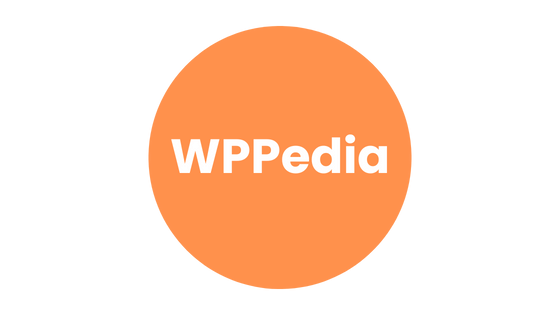In the vast digital landscape of WordPress Rewrite Rules, URL rewriting emerges as a pivotal tool, often underappreciated yet crucial. At its core, URL rewriting is the art of transforming standard, often cumbersome URLs into cleaner, more readable versions. This not only elevates the aesthetic appeal of a link but also plays a significant role in search engine optimization (SEO). Search engines, like Google, favor URLs that are concise and descriptive, as they provide clear indications of the page’s content.
Moreover, for the end-users, a well-structured URL ensures a seamless browsing experience, allowing them to easily discern and navigate the site’s hierarchy. In essence, URL rewriting is the bridge that enhances both SEO rankings and user experience in the WordPress ecosystem.
1. Understanding the Basics of URL Rewriting
URL rewriting, in its simplest form, refers to the process of modifying the visible URL structure without altering the underlying content or its location. This technique holds paramount significance for several reasons. Firstly, it aids in presenting a cleaner and more intuitive URL, making it easier for users to remember and type. Secondly, a well-structured URL can provide both users and search engines with context about the page’s content, enhancing clarity and SEO.
To illustrate, consider a typical e-commerce website. Without URL rewriting, a product page might have a URL like www.shopexample.com/product.php?id=1234. Post-rewriting, this could transform into a more descriptive and user-friendly version: www.shopexample.com/products/blue-sneakers. The latter not only gives a clear indication of the page’s content but also appears more trustworthy and clickable to potential visitors. Such transformations epitomize the power and necessity of URL rewriting in today’s digital age.
2. The Mechanics Behind WordPress URL Rewriting
Ah, the heart of WordPress URL magic: the add_rewrite_rule() function. If WordPress URL rewriting were a symphony, this function would be its maestro, orchestrating every note to perfection.
I. The Maestro Unveiled: add_rewrite_rule()
The add_rewrite_rule() function is WordPress’s built-in mechanism to craft custom URL structures. It’s the unsung hero that works behind the scenes, ensuring your URLs are not just functional, but also elegant and SEO-friendly.
II. Parameters: The Three Pillars
- $regex: Think of this as the pattern detector. It’s a regular expression that matches against the requested URL. It’s the “if” in our “if this, then that” equation.
- $query: This is where the magic happens. Instead of a path, it’s the query string passed to
index.php. It’s the “then that” part of our equation. - $after: A bit of a director, this parameter decides the priority of your rule. It can be ‘top’ or ‘bottom’, determining if your rule should be considered before or after WordPress’s default rules.
III. In Action: A Quick Glimpse
Imagine you run a bookstore and want a custom URL for authors. Instead of the bland yourwebsite.com/?author=jane, with add_rewrite_rule(), you can have the more elegant yourwebsite.com/author/jane. This transformation, while seemingly minor, can make a world of difference in user experience and SEO.
In the vast realm of WordPress, mastering the mechanics of URL rewriting is akin to acquiring a superpower. And with this power, comes the promise of better user engagement and improved search rankings.
3. Advanced URL Rewriting Techniques
In the realm of WordPress, where customization is king, advanced URL rewriting techniques are the crown jewels. These techniques not only enhance the aesthetics of your website’s URLs but also significantly boost its SEO prowess. Let’s embark on this enlightening journey to uncover these advanced techniques.
I. Tailoring Author Page URLs
The default author page URL in WordPress might look something like yourwebsite.com/?author=jane. Functional? Yes. Elegant? Not quite. With advanced rewriting, you can transform this into a more intuitive yourwebsite.com/author/jane. Such a URL not only resonates more with users but also provides a clearer structure for search engines.
II. Crafting SEO-Friendly URLs for Blog Posts
The beauty of a well-structured URL goes beyond its appearance. For blog posts, a default URL might resemble yourwebsite.com/?p=123. By harnessing the power of URL rewriting, this can metamorphose into yourwebsite.com/title-of-the-blog-post. Such descriptive URLs are favored by search engines and provide users with a hint about the content, even before they click.
III. The Unsung Guardian: .htaccess
The .htaccess file is like the guardian of your website’s URL structure. It’s a configuration file used by the Apache server, playing a pivotal role in URL rewriting. By defining rules in this file, you can control the redirection of URLs, ensuring that old links don’t lead to dead ends and that users always find their way to the right content.
Harnessing these advanced techniques is akin to fine-tuning a musical instrument. With the right tweaks and adjustments, your WordPress site can produce a symphony of user engagement and SEO success.
4. Common Challenges and Solutions
The journey of mastering WordPress URL rewriting is not without its hurdles. But fear not, for every challenge encountered, there’s a solution waiting to be unveiled. Let’s address some of the most common challenges and their respective remedies.
I. Hiccups with add_rewrite_rule()
Even the most seasoned developers occasionally grapple with the intricacies of add_rewrite_rule(). A common pitfall is overlooking the need to declare global variables or misconfiguring the rule itself. The remedy? Always double-check your rules and ensure you’re adhering to WordPress’s documentation. A keen eye for detail can save hours of debugging.
II. The Ritual of Flushing Rewrite Rules
One might craft the perfect rewrite rule, but without flushing, it’s like a car without fuel. Flushing rewrite rules is paramount after making changes. It’s akin to refreshing the system’s memory of URL structures. The solution is simple: after adding or altering rules, visit the Permalinks page in your WordPress admin to flush the cache.
III. Navigating the Regex Labyrinth
Regular expressions, or regex, are the backbone of URL pattern matching. However, they can be notoriously tricky. A misplaced character can derail the entire pattern. To ensure accuracy, consider using online regex testers and familiarize yourself with common regex symbols and their functions.
In the grand tapestry of WordPress URL rewriting, challenges are but minor threads. With the right knowledge and tools, they can be seamlessly woven into a masterpiece of functionality and efficiency.
5. Linking Strategies for Enhanced SEO
In the intricate dance of SEO, linking is a move that can’t be overlooked. It’s the thread that weaves together the fabric of the web, connecting pages, domains, and ultimately, users. Let’s delve into the art of linking and how it can elevate your WordPress site’s SEO stature.
I. The Dual Powerhouses: Internal & External Linking
- Internal Linking: This refers to links that connect pages within your website. They’re like the veins of your site, ensuring smooth navigation and distributing page authority. Proper internal linking can boost the visibility of less prominent pages and create a cohesive user experience.
- External Linking: These are the bridges to other domains. By linking to reputable and relevant external sources, you not only provide additional value to your readers but also send positive signals to search engines about the quality and relevance of your content.
II. WordPress Linking Etiquette
- Relevance is Key: Whether it’s an internal or external link, ensure it’s relevant to the context. A misplaced link can confuse readers and dilute your content’s focus.
- Anchor Text Matters: Use descriptive anchor texts that give readers a clear idea of what to expect when they click. Avoid generic phrases like “click here.”
- Monitor Link Health: Broken links can harm user experience and SEO. Regularly check and fix any broken links on your WordPress site.
Mastering the art of linking is akin to perfecting the chords of a song. When done right, it harmonizes your content, amplifies SEO, and resonates with your audience.
6. Potential Shortcomings and How to Address Them
The path to impeccable URL rewriting is strewn with potential pitfalls. However, with awareness and the right strategies, these can be effortlessly sidestepped.
I. Common Missteps in URL Rewriting
- Overcomplication: It’s easy to get carried away and craft overly complex URL structures. This can confuse both users and search engines.
- Inconsistency: Switching URL structures frequently can lead to broken links and a disjointed user experience.
II. Navigating Around the Pitfalls
- Simplicity is Golden: Aim for clear, concise URLs that convey the essence of the page’s content. Remember, the best URL is one that’s easily understood by both humans and search engines.
- Consistent Structures: Once you’ve settled on a URL structure, stick to it. Consistency ensures that your site remains navigable and SEO-friendly.
- Regular Audits: Periodically review your URLs. Ensure they align with your content and rectify any anomalies.
By being vigilant and adopting these best practices, one can transform URL rewriting from a potential minefield into a smooth journey, driving enhanced user engagement and SEO outcomes.
7. Conclusion and Best Practices
As we draw our exploration to a close, it’s evident that WordPress URL rewriting isn’t just a technical endeavor—it’s an art. An art that, when mastered, can dramatically elevate a website’s SEO standing and user experience. Each rewritten URL is a testament to a site’s clarity, organization, and commitment to its audience.
Best Practices to Uphold:
- Prioritize Readability: Craft URLs that are intuitive and descriptive, catering to both human readers and search engines.
- Stay Consistent: Once a URL structure is chosen, maintain it. This consistency aids in building a robust site architecture.
- Continuous Learning: The digital landscape is ever-evolving. Stay updated with the latest trends and best practices in URL rewriting.
In the grand tapestry of website optimization, URL rewriting is a vital thread. Embrace the strategies discussed, and you’ll be well on your way to weaving a masterpiece of digital excellence.
8. FAQ Section
Q: What is rewrite rule in WordPress?
A: In WordPress, a rewrite rule is a function that allows you to customize the structure of your URLs, making them more readable and SEO-friendly.
Q: What is the meaning of rewrite rule?
A: A rewrite rule refers to the process of modifying the visible URL structure without changing the underlying content or its location, enhancing user experience and SEO.
Q: Where do I put rewrite rules in WordPress?
A: Rewrite rules in WordPress are typically added to the functions.php file of your theme. However, they can also be managed using plugins or directly in the .htaccess file.
Q: What is a URL rewrite rule?
A: A URL rewrite rule is a directive that changes the appearance of a URL, making it more user-friendly and descriptive, without altering the actual content it points to.
9. Additional Resources
For those eager to delve deeper into the intricacies of WordPress URL rewriting, we’ve curated a list of invaluable resources from our very own WPPedia. Each article offers a unique perspective, ensuring a comprehensive understanding of the topic.
- WordPress Rewrite Rule Generator
Discover a tool that simplifies the process of creating custom URL structures. This generator is a boon for those who prefer a more hands-off approach.
- WordPress Rewrite Rules .htaccess
Explore the role of the.htaccessfile in URL rewriting. This resource demystifies the connection between WordPress and this crucial server file.
- WordPress Rewrite Rules Plugin
Learn about plugins designed to manage and implement rewrite rules. Ideal for those who wish to harness the power of plugins for URL customization.
- WordPress Rewrite Rules for Custom Post Type
Delve into the nuances of creating SEO-friendly URLs specifically for custom post types, enhancing both user experience and search visibility.
- WordPress Flush Rewrite Rules
Grasp the importance of flushing rewrite rules and the scenarios that necessitate it. This article emphasizes the maintenance aspect of URL rewriting.
We encourage readers to explore these resources to fortify their knowledge and enhance their WordPress sites. Happy reading!



